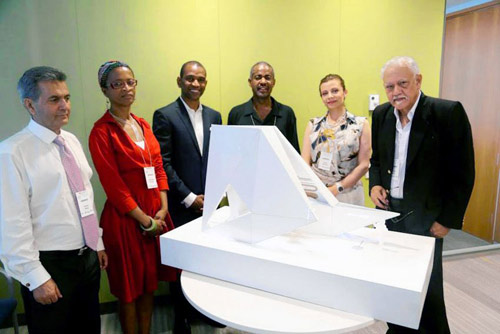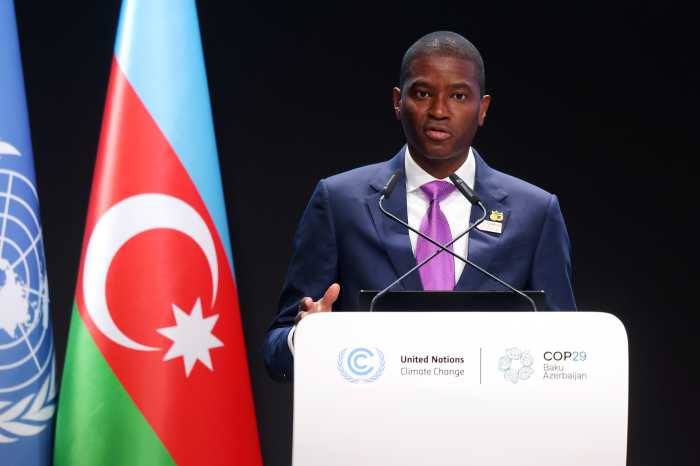A Haitian American architect has been declared the winner of an international competition to design a memorial that will be permanently on display at United Nations Headquarters in New York to honor victims of slavery and the transatlantic slave trade.
Unveiling Rodney Leon’s “Ark of Return” on Sept. 23, U.N. Secretary-General Ban Ki-moon said the memorial “will serve as a reminder of the bravery of those slaves, abolitionists and unsung heroes who managed to rise up against an oppressive system, fight for their freedom and end the practice.”
The ceremony, held on the eve of the General Assembly’s annual debate, was also attended by the President of the body’s 68th session, Antigua and Barbuda’s U.N. Ambassador Dr. John Ashe.
Ashe commended all participants in the competition for “being a voice of change and hope” whose ability to create meaningful artwork “deepens our faith in human goodness and decency, and for this, we are all grateful.”
The piece by Leon, a Manhattan-based designer and architect of the African Burial Ground National Monument in lower Manhattan, features a “symbolic spiritual space and object where one can interact and pass through for acknowledgement, contemplation, meditation, reflection, healing, education and transformation,” according to its creator.
The U.N. said Leon’s work was selected from among 310 design proposals from 83 countries in a competition launched two years ago by the U.N. Educational, Scientific and Cultural Organization (UNESCO), with support from the U.N. Department of Public Information’s Remember Slavery Program, and Member States from the Caribbean Community (CARICOM) and the African Union.
Jamaica, as the Chairman of the Permanent Memorial Committee, was represented at the event by Prime Minister Portia Simpson Miller.
UNECO Director-General Irina Bokova, who also participated, said she was “moved” to be participating in the event, given she just returned from Haiti, where, she said, the memory of slavery and the slave trade carries precious significance not just of suffering but also of “victorious fight from oppression for freedom.”
One of the judges, David Boxer, a former curator at the National Gallery of Jamaica, said the real challenge for him was to find a piece that both spoke to the tragedy itself – which he said required a memorial in a “more traditional sense” – and something that is inspirational.
Boxer said he was looking for a piece “that looks to the future, that deals with the whole question of hope – that things are going to improve, that things are going to become better.
“So it’s how do you combine those two sentiments into a single monument,” he said.
The U.N. said the judges made their unanimous selection after meeting with each of the seven finalists.
Leon said the competition was “a once in the lifetime opportunity to do something which is going to last generations and has had an impact on so many people’s lives, not only spiritually and emotionally but also in an educational capacity, as well.”
In addition to the first place winner, the panel of judges awarded the French team of Pierre Laurent and Nicolas Grun a second place award.
“Middle Passage” by Portuguese architect Sofia Castelo and Romanian architect Adriana Thion, and “The Wounded Earth” by Italian architects Carlo Gandolfi, Paola Passeri, Alessandra Ripa and Monica Sachetti were named as third place winners.


























